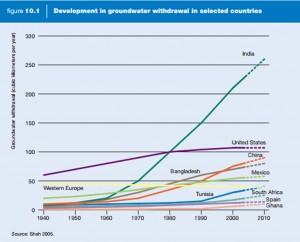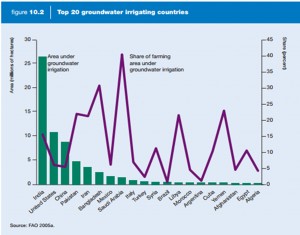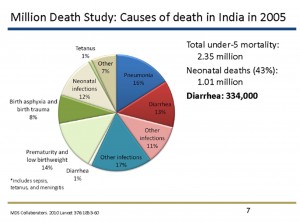Holding Agriculture Accountable for Groundwater Use
Posted on December 17th, 2013 | No Comments »
By Jordan Lane Gilmore, Advisory Board Member, Water Innovations Alliance Foundation
and Vincent Caprio, Executive Director, Water Innovations Alliance Foundation for GE’s Our Water Counts blog, Water Wise
My experience in water well projects and research in SE Asia over the last few years have lead me to conclude that there is a major lack of information around water withdrawals in India and a need for openness in regard to alternative models for water infrastructure development, particularly in rural India. As water access is a fundamental building block for all development, especially in agrarian societies, it is in the interest of stakeholders to think specifically and critically about planning strategies that are suited for projected growth. If limited water resources and the underlying ecological systems are not safeguarded, current agricultural practices will undermine food security.[1] In India, groundwater (the overwhelmingly primary source of water for agriculture) depletion rates are estimated to be dangerously high and the quality of surface water is very poor.
Right now, there is no real indication of industry being united on a long term approach to alleviate the tremendous pressure put on water resources. This is not to say many companies do not recognize the problem and/or are doing little about it. They do quite a lot. But they could do much more and could target their efforts more directly at the strategic planning of infrastructure. Many of the majors have environmentally conscious practices in place and CSR programs, which are growing. They include programs like rainwater harvesting, advanced land cultivation, fodder preservation schemes, sericulture and water recycling programs, education centers, adult literacy programs and credit schemes.[2] Unilever farmers, for example, are required to apply techniques that are “appropriate to the amount of water available and according to local conditions so that capacity is not exceeded”.[3]
But what are these companies doing to contribute to the knowledge of that capacity (water availability) and local conditions? Since they operate across many watershed areas and draw from the resource spanning across many state and other institutionalized boundaries, what are they doing to improve our understanding of watershed and larger system wide dynamics? Many states have identified a lack of adequate monitoring as a significant problem that prevents proper management. FSG reports on a broad lack of impact assessment in this area.[4]
So, how is industry leveraging the robust information technology infrastructure already in India to modernize assessment and management? In Brazil, Unilever farmers use high tech monitoring devices to make irrigation and fertilizing processes more efficient, so much that they have cut their use in half for tomato crops. This says little, however, about the tech deployment in India, and even less about the upstream processes, i.e. the initial withdrawals from groundwater. Dupont has made use of GPS technology to increase yields with fewer inputs, but we can only infer so much toward the assessment of ecosystem wide impacts, which is very much in the company’s self-interest. Dupont confirms the need of its farmers for access tools enabled by the integration of mobile and information technology resources.[5]
There is a very real opportunity to improve the understanding of the rate of withdrawals and the status and of water resources by leveraging mobile technology and information services. Companies like WellDone are showing us how a device simpler than the technology of a flip-phone can be adapted to sensors and attached to a wellhead to measure the flow of water being withdrawn from aquifers (and ideally, down the road, test the quality).
So, the question is – would Ag companies not benefit from better quality data and real time information around the withdrawal of water from the source? A technology that measures extraction and can be implemented widely is available and fairly inexpensive. If these companies want to enable better management while increasing information flow to their stakeholders, it might behoove them to consider taking advantage of the mobile infrastructure largely in place.
This would represent a step toward much needed monitoring and the benefits to management have tremendous potential. Consider for a moment the alleviation of health problems related to water resource exhaustion. Diarrheal disease, relating to poor water access and quality, kills more children under-5 years of age than AIDS, malaria & measles combined.
Improved management based on strong assessment of groundwater resource capacity translates into improved (more efficient) distribution of water and will likely present smarter models for water infrastructure development (that go against antiquated models that entrench industry into larger and more costly infrastructure projects). From a PR and CSR perspective alone, this translates into smart planning that engages and empowers stakeholders on a modern approach to infrastructure development.
[1] UNEP 2012
[2] School of Doctoral Studies (European Union) Journal 2010
[3] Unilever 2009
[4] Australian Centre for International Agriculture Research 2012
[5] Dupont Agriculture 2012







